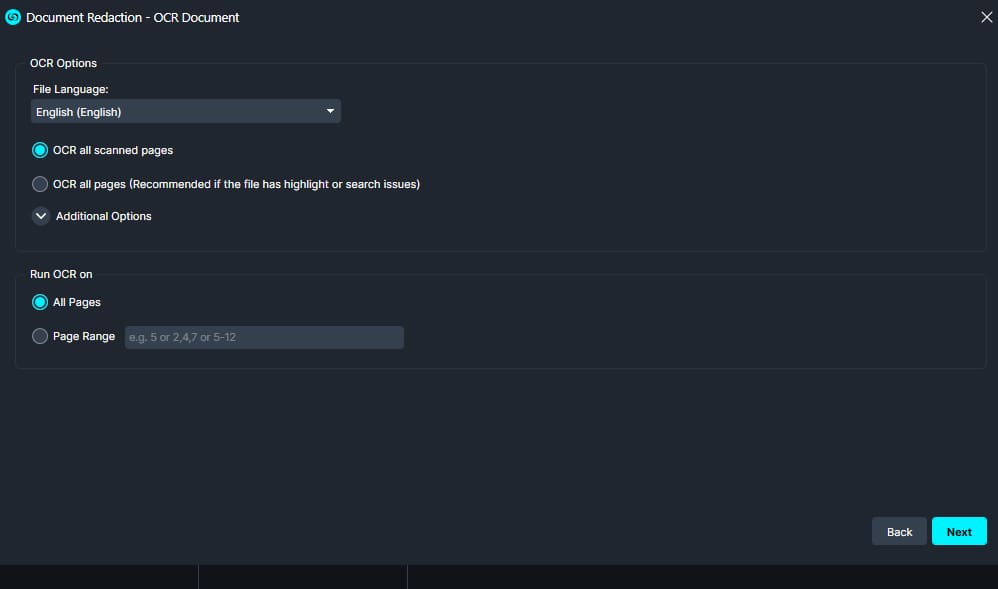Overview
Optical Character Recognition (OCR) is an essential step in preparing scanned or handwritten PDFs for document redaction. When a file isn’t machine readable, CaseGuard’s OCR engine converts it into fully searchable and editable text, making OCR redaction fast, accurate, and compatible.
When should you OCR a document?
You should OCR your file (or at least the pages you plan to redact) when:
- Text on the scanned documents is not being detected correctly
- The original document was poorly OCR’d
- You will notice this when highlighting text selects random words instead of full sentences
- Your document includes images that contain text
- You want to improve accuracy for automated redaction workflows
Running OCR converts all embedded, handwritten, or scanned text into searchable content that CaseGuard’s document redaction tools can analyze accurately.
How to OCR a document in CaseGuard?
Follow these steps to prepare your document for OCR redaction:
- Click on Document Tools in the left toolbar. Under Document Tools, click the OCR Document button, and a popup will appear.
- Under the “OCR Options” menu, select either “OCR all scanned pages” or “OCR all pages,” which will OCR all types of pages, including scanned and machine-generated.
- Under “Run OCR on,” select either “All Pages” or add a “Page Range.”
- Click “Process OCR.” A load will appear at the bottom of the screen, indicating how far the OCR process is for your document.
- Once complete, click the OCR Document button again from the left toolbar, and it will show what pages have OCR’d under “Files Information.”
Your document(s) is now fully machine-readable and ready for AI redaction using CaseGuard’s automated document redaction tools.

Why OCR matters for redaction accuracy:
Running OCR on your scanned or handwritten documents ensures:
- More accurate PII detection
- Cleaner text recognition for automated PDF redaction
- Better performance for larger files
- Faster document redaction workflows
Let’s see it in Action!

Play Video
Was this article helpful to you?
No
Yes